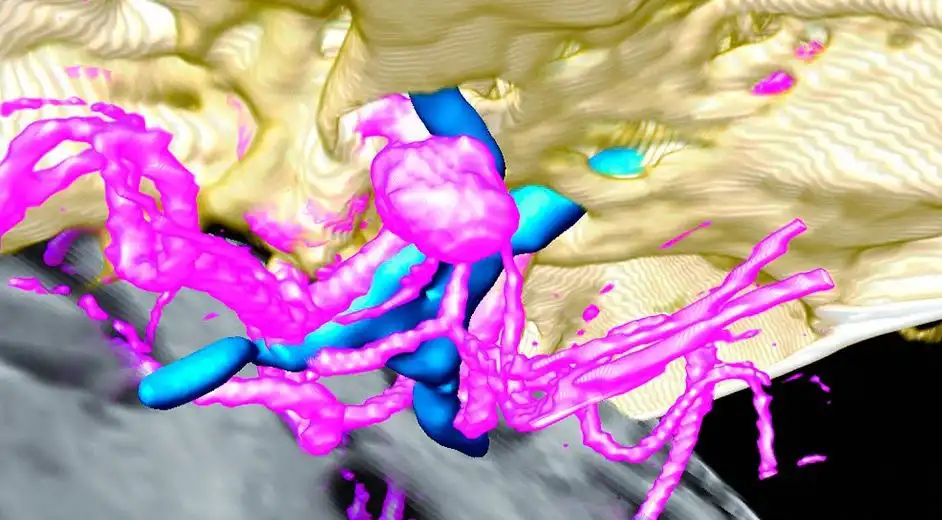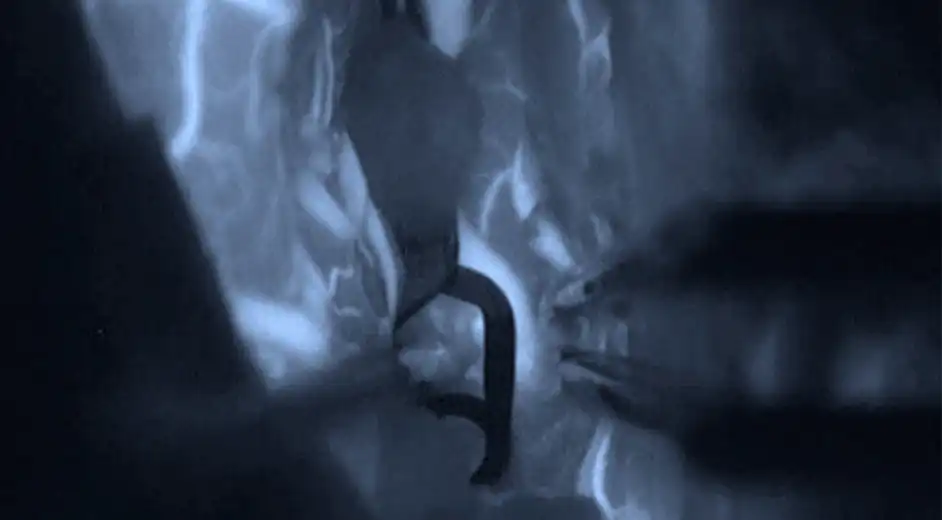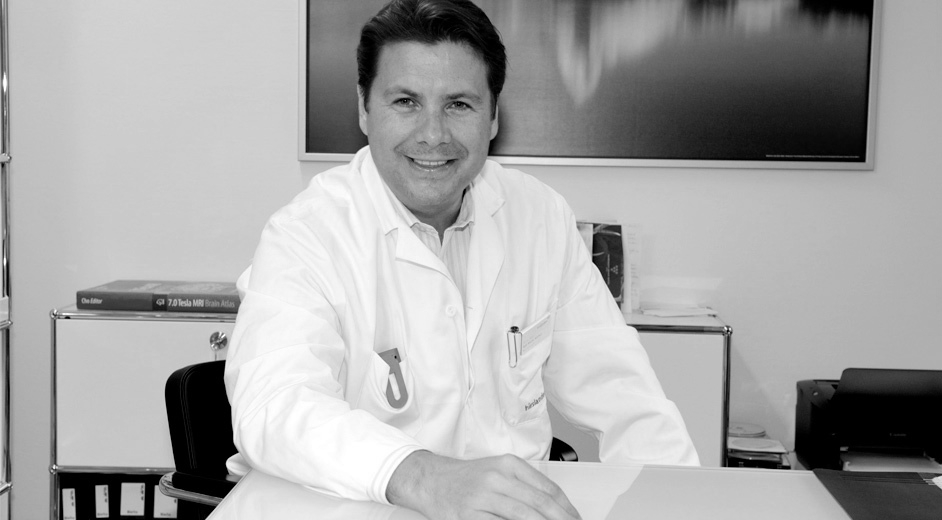1. When should an unruptured aneurysm be treated?
The decision as to whether an aneurysm should be treated in order to prevent a possible bleed and neurological damage is dependent on many factors and must be carefully evaluated in each individual case.
A recommendation of treatment will always be a joint decision between the patient and the physician.
„ As a general guideline, unruptured aneurysms which, because of their size and compression of surrounding structures, cause significant symptoms should be treated.
In cases of asymptomatic aneurysms which were detected by pure coincidence, the decision of treatment is first of all guided by calculations of the risk of rupture based on the size, position and shape of the aneurysm.
The risk of a rupture then has to be balanced against the risks inherent to treatment and, as such, personal circumstances and considerations, age and other illnesses play as much a role in making this decision as any purely analytical calculation.
If a decision is made to follow-up on an unruptured aneurysm with serial MRA in order to observe its size and shape, observation of structural change over time usually leads to the recommendation to eliminate the aneurysm either by clipping or coiling.

2. How can an aneurysm be treated?
To repair an aneurysm means sealing it off from the blood stream of the parent vessel. This can be achieved either by applying a titanium alloy clip over the neck of the aneurysm during a microneurosurgical procedure or through the use of metal coils inserted via an intravascular catheter.
Each case will be comprehensively evaluated by an experienced team of neurosurgeons and neuroradiologists, with due consideration given to the location, size and shape of the aneurysm as well as a number of accompanying risk factors.
„ If microsurgical clipping is indicated, a 3D Virtual Reality simulation of the exact architecture of the aneurysm will be carried out prior to the operation.
During the operation, the positioning of the clip is controlled with a microscope and an endoscope, which allows the examination of otherwise hidden areas to verify accurate clip position, complete aneurysm closure and confirm structural integrity of all surrounding vessels.
Furthermore, the arrested blood flow in the aneurysm, as well as normal flow in the nearby vessels is confirmed with fluorescent contrast medium, Doppler ultrasound and, in selected cases, with intra-operative angiography.
In most cases it is possible to completely close the aneurysm without leaving a remnant aneurysm sac behind.

3. What is the average cost of aneurysm surgery?
The cost of aneurysm surgery varies and is dependent on a variety of factors such as the complexity of the aneurysm architecture and other medical conditions.4. Are there side-effects or dangers to aneurysm surgery?
As with any surgery, aneurysm surgery is not free of risk. Depending on the individual architecture of the aneurysm, that is, its size, location, shape as well as position and the configuration of the surrounding blood vessels, the risk of surgery may vary considerably.
In each case, a multidisciplinary team prepares and plans for the aneurysm surgery in great detail and by utilising latest techniques and most advanced technology.
„ In the case of incidental, unruptured aneurysms, this allows us in many instances to minimize the surgical risk to a level which is below the natural long term risk of rupture.
5. What is the average rate or time of recovery after suffering an aneurysm rupture?
A subarachnoid haemorrhage (SAH) caused by a ruptured aneurysm is acutely life-threatening and 10-15% of patients die before even reaching medical care. Of those patients who survive the initial phase of aneurysm rupture and undergo aneurysm repair either with clipping or coiling, less than one third return to the same quality of life as before the SAH.6. What is the average time of recovery after a planned repair of a non-ruptured aneurysm?
After a successful aneurysm repair either by clipping or coiling, an otherwise healthy patient can usually leave the hospital within a few days and achieve full recovery in less than a month.Find out more
Dr Ralf A. Kockro is a Consultant Neurosurgeon at Klinik Hirslanden, Zürich and a Senior Lecturer of Neurosurgery at the Universities of Zürich and Mainz, Germany. Prior to that he held positions as a Consultant Neurosurgeon at the University Hospital Zürich, the University Hospital Mainz and the Royal London Hospital.





